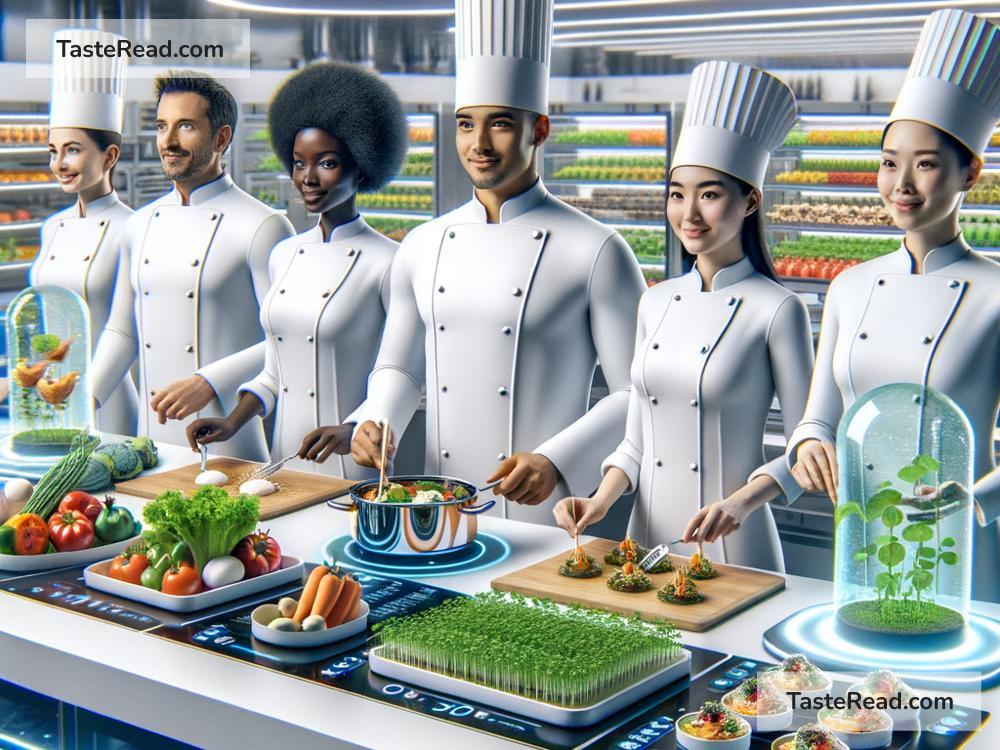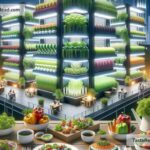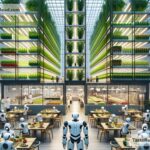The Future of Food and Inclusive Innovation: Building a Better Food System for Everyone
Food is one of our most basic needs, yet the way we grow, process, and eat food is constantly changing. Throughout history, humans have invented new ways to grow crops, cook meals, and solve problems like hunger. Today, as the world faces challenges like climate change, population growth, and inequality, the future of food is becoming more important than ever. To make sure everyone has access to healthy, sustainable food, we need to embrace inclusive innovation—finding creative solutions that benefit all people, not just some.
What is Inclusive Innovation?
Simply put, inclusive innovation means creating ideas and technologies that help everyone, especially those who are often left behind. It’s not just about inventing new machines or apps; it’s about making sure the benefits reach people from all walks of life—farmers in rural communities, families with limited income, and regions hit hardest by climate change. Inclusive innovation acknowledges that no one should be left out, and food systems should be fair and accessible to everyone.
The Challenges We Face in Food
The world’s food system is under pressure. By 2050, the global population is expected to reach nearly 10 billion. Feeding everyone will be a big challenge, especially as farmland becomes scarce and the planet’s health declines. On top of that, millions of people still go hungry each day, while others eat too much unhealthy, processed food. Food waste is another major issue—about one-third of all food produced globally goes uneaten.
Climate change is making the problem worse. Extreme weather events like droughts, floods, and wildfires damage crops, disrupt food supply chains, and reduce the amount of food we can grow. Farmers, especially small-scale farmers, are struggling to adapt to these changes. If we don’t address these challenges soon, the future of food could become a crisis.
Innovative Solutions for the Future of Food
While the food challenges are intimidating, there are many exciting and promising innovations on the horizon. Here are some ways science and creativity are shaping the future of food:
1. Alternative Proteins
For years, meat has been a major part of diets around the world, but raising livestock takes up a lot of land, water, and energy—and contributes significantly to greenhouse gas emissions. Scientists are developing alternative proteins, like plant-based meats and lab-grown meat, that taste like the real thing but are much more sustainable. These options give people the chance to eat protein without harming the planet.
2. Vertical and Urban Farming
Traditional farming requires large fields and good weather, but with vertical farming, crops can grow indoors, stacked in layers under controlled conditions. Urban farming takes this idea into cities, allowing fresh food to be grown closer to where people live. These methods use less water, take up less space, and reduce transportation emissions. As technology improves, vertical and urban farms may become the future of agriculture.
3. Smart Agriculture
Technology is helping farmers make better decisions. With tools like drones, sensors, and AI-powered apps, farmers can monitor soil health, water levels, and crop growth in real-time. This “smart agriculture” reduces waste, increases efficiency, and helps farmers adapt to changing weather conditions. Even small-scale farmers in developing countries are starting to benefit from these tools.
4. Waste Reduction
Food waste is a huge problem, but technology offers solutions. Apps can connect grocery stores or restaurants with organizations that distribute surplus food to those in need. Biodegradable packaging and composting systems can turn waste into fertilizer, creating a circular food economy. By reducing waste, we can make more efficient use of the food we already produce.
5. Personalized Nutrition
Everyone’s body is different, and the food that’s good for one person might not be ideal for another. Personalized nutrition uses data from wearable devices, genetic testing, and health records to recommend meals tailored to an individual’s needs. This ensures people eat in a way that supports their health and wellbeing, preventing illnesses caused by poor diets.
Making Food Innovation Inclusive
As these innovations emerge, it’s crucial that they work for everyone and not just wealthy countries or large corporations. Here are some ways to ensure inclusive innovation in food:
-
Support Small-Scale Farmers: Nearly 70% of the world’s food is grown by small farmers, yet many of them don’t have access to modern tools or resources. Governments and organizations can help by providing training, affordable technology, and fair pricing for their crops.
-
Develop Locally-Specific Solutions: Different regions have different food traditions and challenges. Innovations should take local cultures, tastes, and conditions into account. For example, drought-resistant crops might be more helpful in dry areas, while flood-resistant farming techniques may work better in wetter regions.
-
Empower Women and Marginalized Groups: Women play a huge role in food production and preparation, yet they often face barriers like lack of land ownership or education. Inclusivity means giving marginalized groups the tools and opportunities they need to thrive in the food system.
-
Make Healthy Food Affordable: Alternative proteins, organic options, and other innovations are great—but only if people can afford them. Governments and companies must work together to make healthy and sustainable food accessible to low-income families.
The Path Forward
The future of food is full of possibilities, but it requires collective action. Scientists, farmers, companies, governments, and everyday people all have roles to play in shaping how food is grown, shared, and enjoyed. By focusing on inclusive innovation, we can ensure a better food system for everyone—one that feeds the planet sustainably, fairly, and equitably.
The choices we make today will determine what’s on our plates tomorrow. By prioritizing fairness, creativity, and collaboration, the future of food can be a powerful force for good in the world. Let’s build a future where everyone has enough to eat, where innovation uplifts communities, and where no one is left behind.


